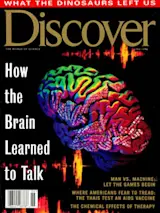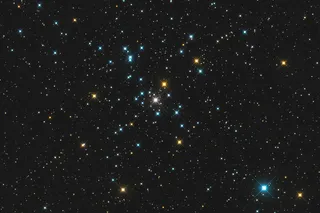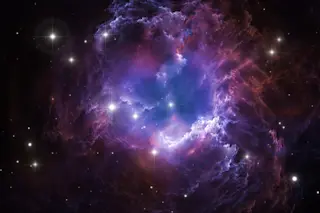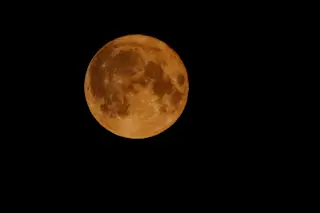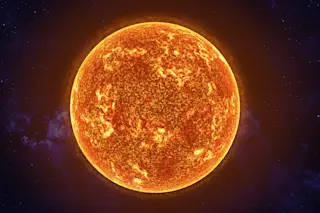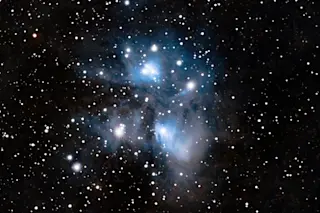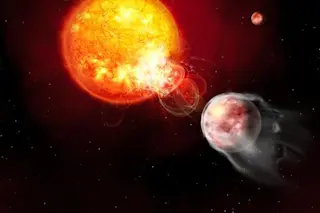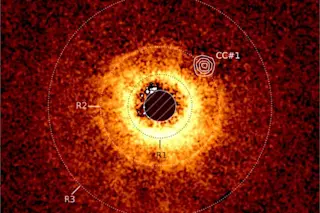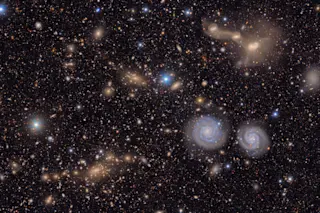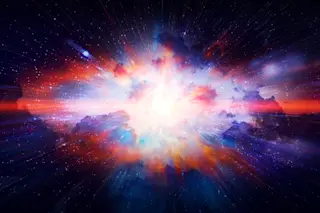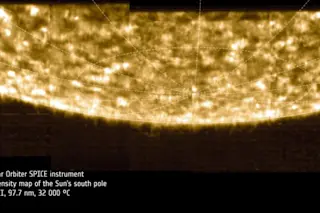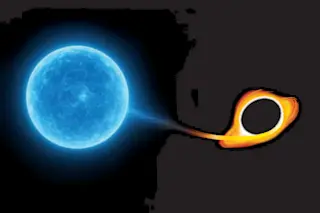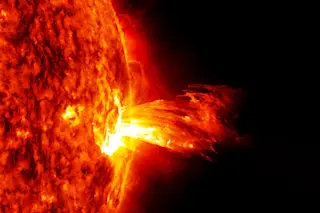Astronomers agree that the faintest objects the unaided human eye can see are stars of the sixth magnitude. (Magnitude decreases as brightness increases: a fifth-magnitude star is roughly 2.5 times brighter than a sixth-magnitude star; a fourth-magnitude star is 2.5 times brighter still.) That limit makes the famous globular star cluster in Hercules, which is overhead these nights, a fine eye chart: it beams in at magnitude 5.8. Another test is offered by the Big Dipper, now high in the northwest. Try to see any stars within the Dipper’s bowl--several hover just around the magnitude 6 barricade.
Unfortunately, even if your eyesight is quite good, you may well be unable to see those stars. The problem is light pollution. In urban and suburban skies a milky atmosphere, rather than ocular insensitivity, closes the curtains on the universe beyond. Today’s suburbs reveal stars no dimmer than magnitude 4--leaving no trace of the Milky Way, and only three of the Little Dipper’s stars. City sky watchers fare much worse: their entire sky might contain only 300 stars.
That doesn’t mean, however, that you urban dwellers must opt out of the cosmic eye test. Even polluted skies hold worthy challenges to your visual abilities. Another aspect of vision, and one that is more immune to light pollution than is brightness, is visual acuity--the ability to resolve fine detail. Visual acuity is commonly expressed in terms of the familiar twenty-twenty designation. But many people’s eyes perform far better than what’s considered normal. Why not check your acuity with the finest test object the heavens have to offer? It’s Epsilon Lyrae, the nearest and northernmost of two little stars hovering next to Vega, the dominant star of summer.
If you aim binoculars at blue-white Vega, high in the east, Epsilon will be in the field of view, a knockout of a double star. But for the test, put those binoculars aside. Is Epsilon Lyrae still a double? Those with twenty-twenty vision will see an oddly elongated star. A whisker better than twenty-twenty and you’ll see a clear binary. And if you can split Epsilon, you’ve resolved 3.5 arc minutes--about one-eighth the diameter of the moon.
If splitting Epsilon is a snap, test yourself against Venus. Every 19 months, just before and after Venus’s closest approach to Earth, it pops out of the blinding glare of the sun to become a large, hair-thin crescent, not quite one arc minute in width. Some observers claim to see that crescent without optical aid, a daunting exercise requiring more than three times the keenness of vision needed to resolve Epsilon. Give Venus a try early in the month, in the bright twilight just above the sunset. If you see only a star, cheat: swing a telescope its way and take in the gorgeous crescent of the departing evening star.
While you’re at it, give Epsilon another look. Through that same small telescope, each of its two stars breaks apart. Suddenly it’s a double double! Epsilon is a beautiful four-star system, each twosome composed of white suns separated by twice the diameter of our solar system. One of those stars, spectroscopy has shown, has its own companion. When we set our sights on that little star near Vega, we’re really gazing at quintuplets.
Five Epsilons for the price of one, a Dipper full of stars, and a crescent evening star: these are summer spectacles one should resolve to see.


